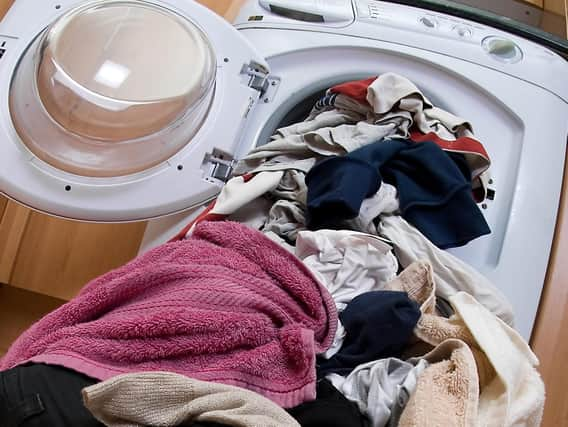STEVE CANAVAN: The fat of slaughtered animals and a scrub board


In our house we seem to put clothes washes on every day, mainly because I have a small child whose aim is to put more food on her clothes than in her mouth and a wife whose hobby is running and so every evening chucks yet another pile of heavily sweat-stained Lycra outfits in the laundry basket, where it releases an odour so powerful that next door have twice rung the council to complain about it.Â
Back to the washing machine. Finally, at the weekend, and midway through a 30 degree delicate fabrics wash, our machine made a huge wheezing noise '“ like an overweight cyclist halfway up a hill '“ and stopped.
Advertisement
Hide AdAdvertisement
Hide AdIt was clearly time to buy a new model, so at the weekend that's what Mrs C and it got me thinking about how marvellous a washing machine actually is.
When I was a nipper, I remember my mum hand-washing clothes all the time, which got me thinking about when machines become the norm.
I did an hour or two of research in the library and I discovered that in the real olden days people cleaned their clothes by pounding them on rocks, then rubbing abrasive sands on them and washing the dirt away in local streams.
The fat of slaughtered animals was sometimes used as soap, which must have been less than ideal when a bloke was choosing what to wear on a date 'hmm, should I go for the shirt that smells of bludgeoned rabbit or the one that stinks of deceased fox?'.
Advertisement
Hide AdAdvertisement
Hide AdThe first machine, of sorts, was the scrub board in 1797, but the first to use a drum was dreamt up by American inventor James King in 1851.
Twenty years later, a chap called William Blackstone from Indiana built a birthday present for his wife. It was a machine which removed and washed away dirt from clothes.
The first washing machines designed for convenient use in the home had arrived, though I can't help feeling that Mrs Blackstone might have preferred chocolates and tickets to an Ed Sheeran concert.
And so it went on, improvements and refinements here and there and by 1940, 60 per cent of homeowners in the US had an electric washing machine.
Advertisement
Hide AdAdvertisement
Hide AdThey didn't become popular in the UK until the 1950s, mainly due to the economic impact of the Second World War. But it wasn't until '“ and this surprised me '“ the 80s, even 1990s, when fully automatic machines became widespread. What I didn't relealise was we in Britain and Europe are different to elsewhere.
Our machines are front-loading '“ we stick our dirty underpants in that circular bit. In the US, Australia, Africa, pretty much everywhere in fact, the predominant machine is a top-loader.
Which is best? Well, ours use less energy, water and detergent, but theirs wash better '“ so in other words we've got the moral highground but we smell a bit worse.
Different ideas and designs are cropping up all the time but the future might have been developed by a group of people in West Yorkshire. In 2008, a team at the University of Leeds created a washing machine that uses only a cup (less than 300ml) of water and some re-usable plastic chips to carry out a full wash.
Advertisement
Hide AdAdvertisement
Hide AdThe machine leaves clothes virtually dry, and uses less than two per cent of the water and energy used by a conventional machine. It could save billions of litres of water each year.
Known as the Xeros washing machines, it is on the market, but only available to businesses as it stands.
So there you go, fascinating, eh?Â